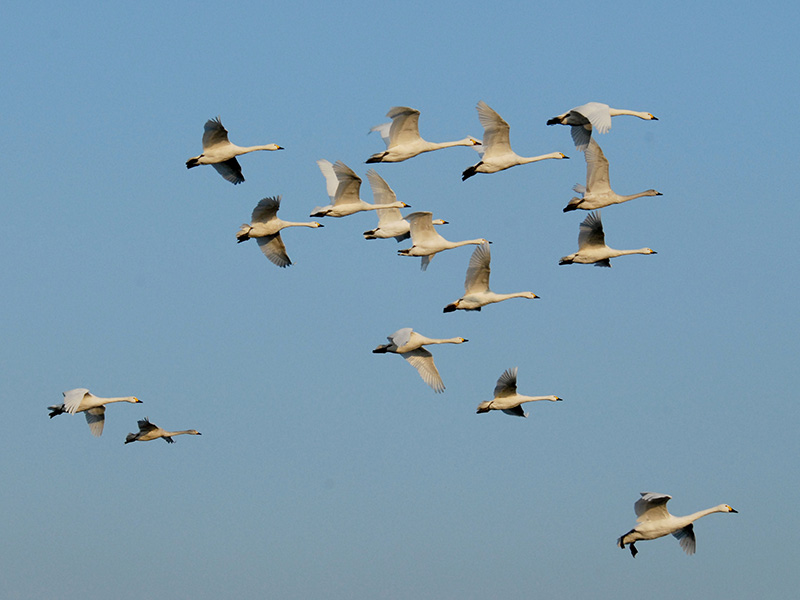WWT Slimbridge Wetland Centre sees annual ‘Swanfall’

The skies above WWT Slimbridge, in Gloucester, were the focus of everyone’s attention on Wednesday when the site’s much-loved Bewick’s swans began arriving in good numbers, officially starting this winter’s ‘swanfall’.
On 16 November WWT Slimbridge had just two Bewick’s swans on site and the first ‘swanfall’ brought numbers up to 43 by 22 November. The appearance of so many swans in one go is called a ‘swanfall’, and marks the final stage of their epic 3,500km journey from Arctic Russia to the comparatively warmer weather of the UK.
Familiar faces to arrive during the latest swanfall included Gastro and Roux, who have been a pair since the winter of 2019 and this year have come with their first two cygnets in tow. Another pair include Primero and Piquet, Primero first wintered at Slimbridge with mate Pidro in 2012, and they were together until the winter of 2014. Primero returned with Piquet the following winter with two cygnets and the pair have brought three with them this winter.
Another unique individual to arrive during the swanfall this year included Winkey, the oldest swan on site, currently at 26-27 years old.
This elegant swan – the smallest of all swans in the UK – is named after British engraver, Thomas Bewick, who specialised in bird and animal illustrations. Every winter they return to the UK to escape the arctic winters of Russia. Their arrival is spurred on by the onset of colder weather on the continent, north-easterly winds, and their need for access to ice-free wetlands, including WWT’s sites in the UK.
However, the population of these beautiful birds has plummeted in recent decades, following a series of poor breeding seasons. The Bewick’s also face pressure from the loss of healthy wetland habitats across their range, as well as the impact of climate change, lead ammunition poisoning and illegal hunting.
WWT founder and conservationist Sir Peter Scott dedicated much of his time to watching and studying Bewick’s swans. He was one of the first people to notice that each bird has a unique bill pattern.
The WWT conservation team based at Slimbridge have been using this technique to identify and record individual Bewick’s swans since Sir Peter Scott’s first study at the centre.
This year marks the 60th year of their Bewick’s swan bill pattern study. Over that time, the comings and goings of individuals and family dynasties has led to over 10,000 swans being recorded, one of the longest single species studies worldwide.
Visitors to Slimbridge can experience close up views of the Bewick’s swans, with excellent views at their daily commentated Wild Bird Feeds, from the Peng Observatory at 4pm.
Explore Gloucestershire
24 November 2023
For further information.
OTHER NEWS
